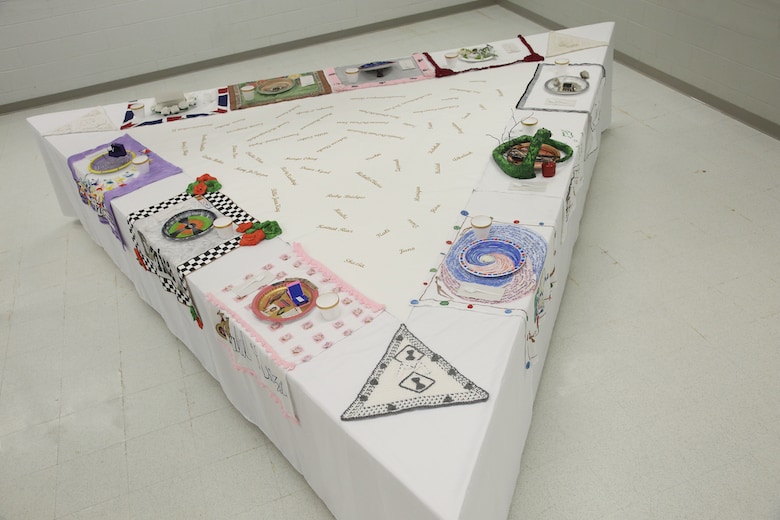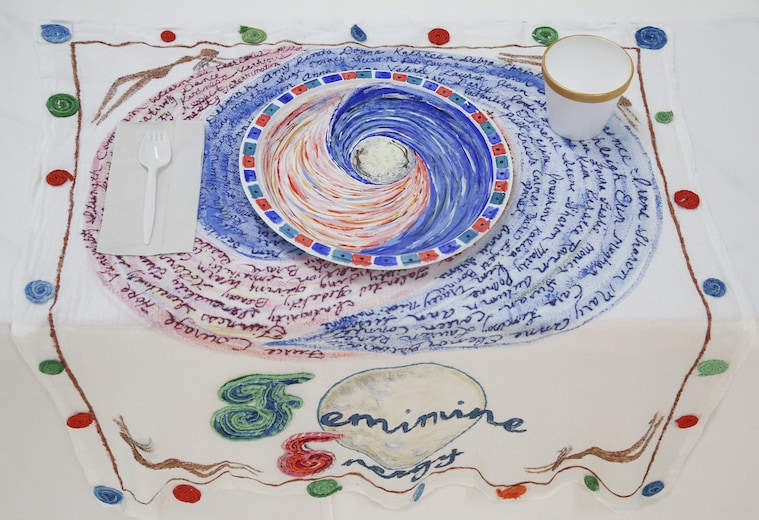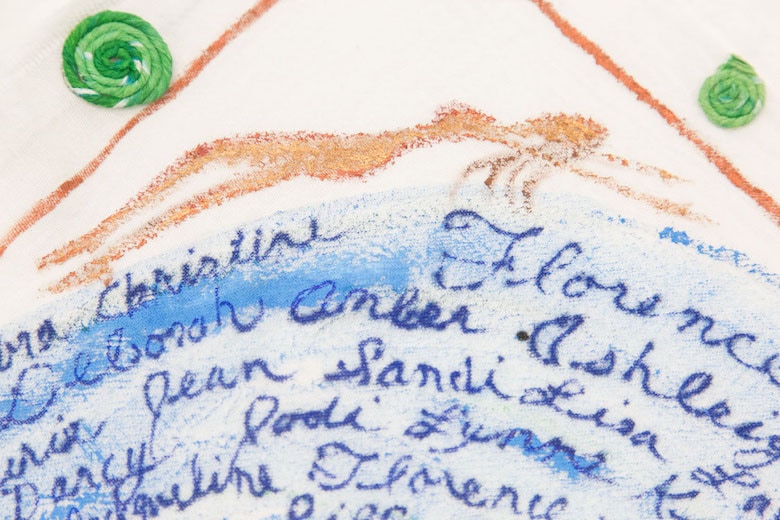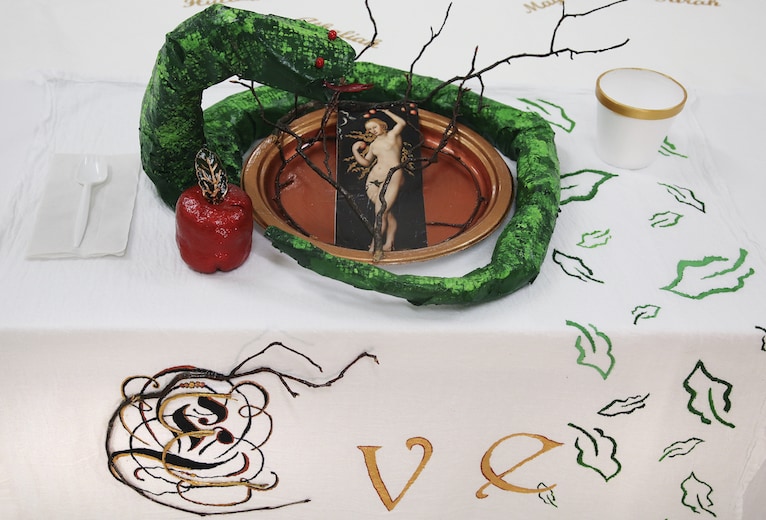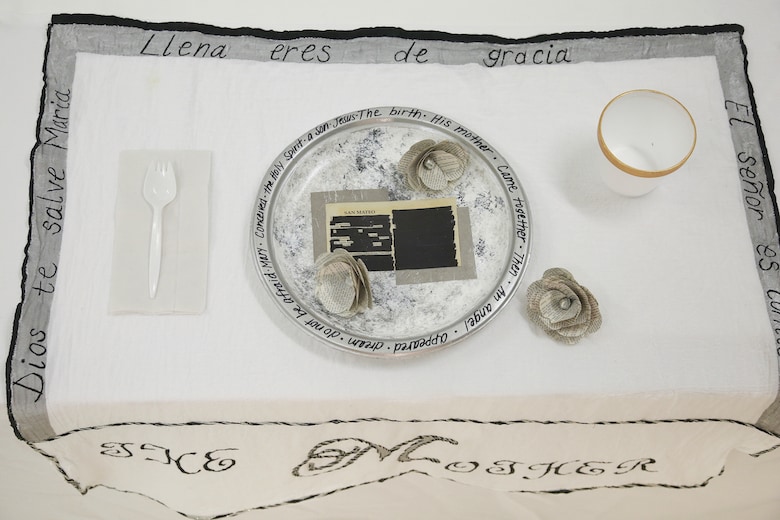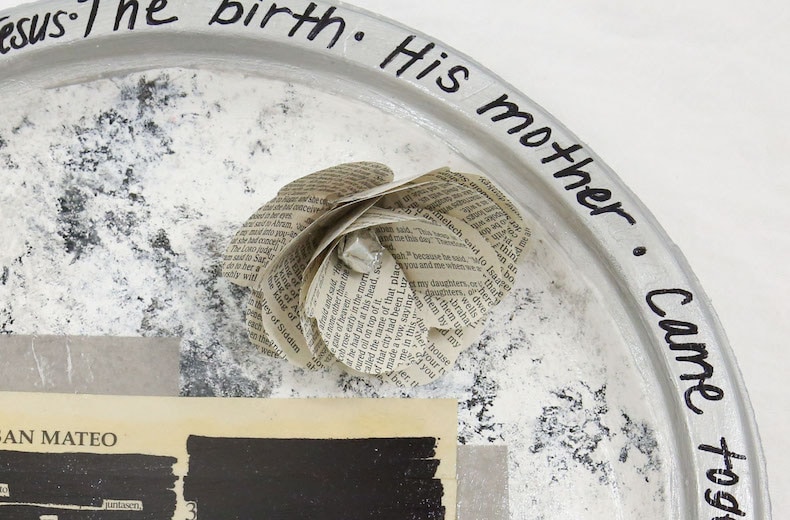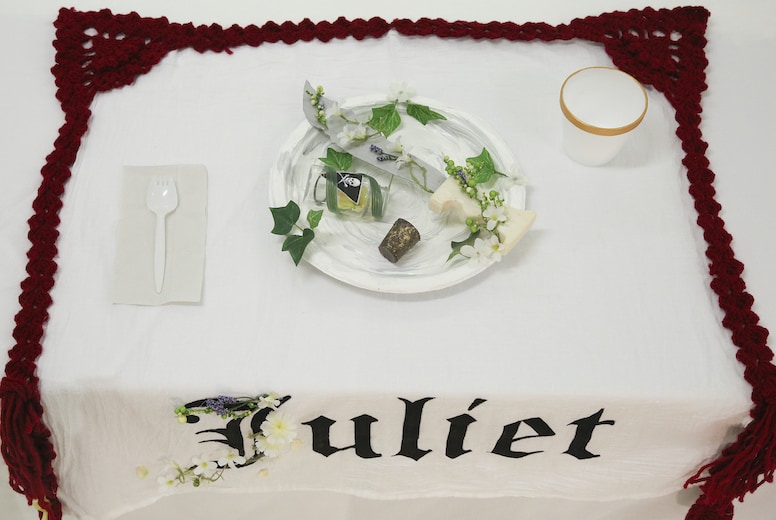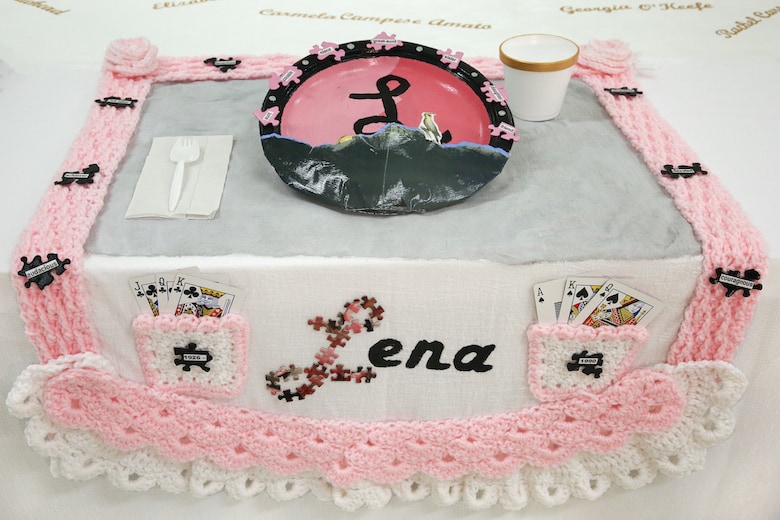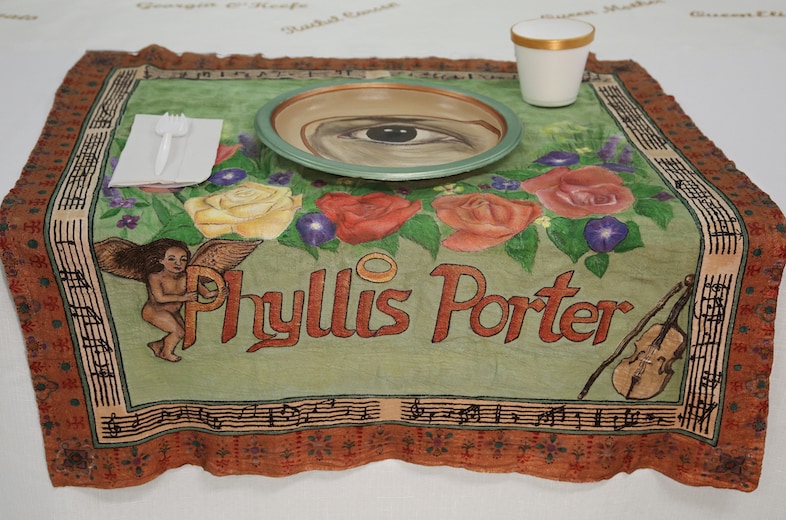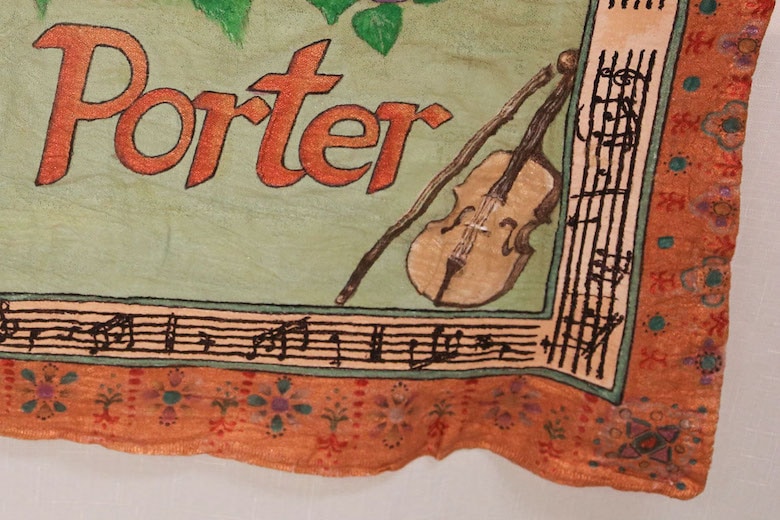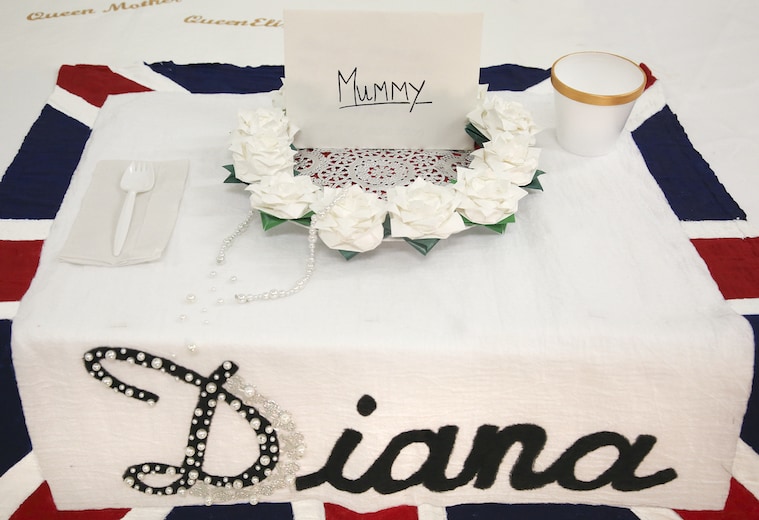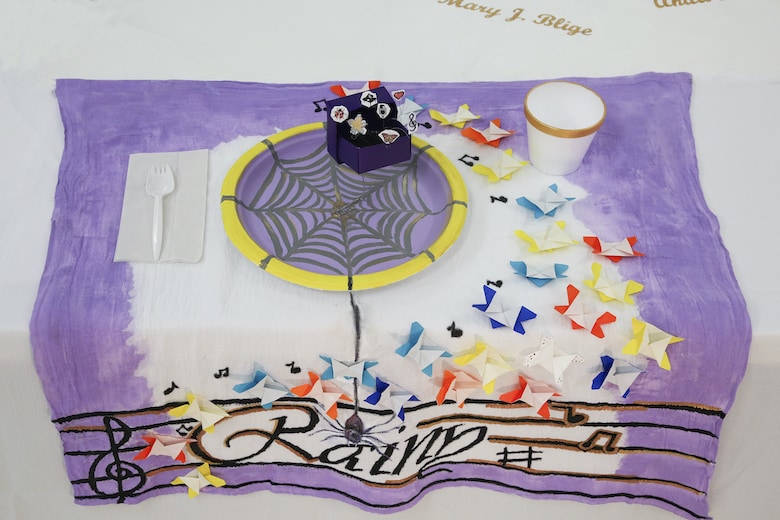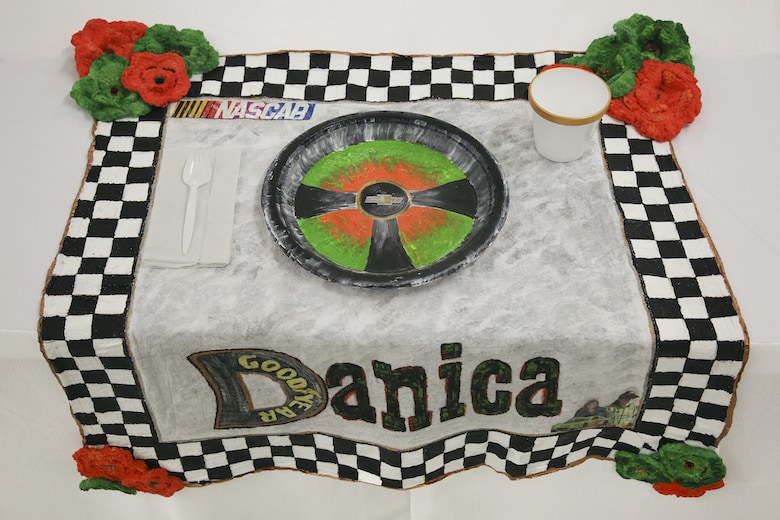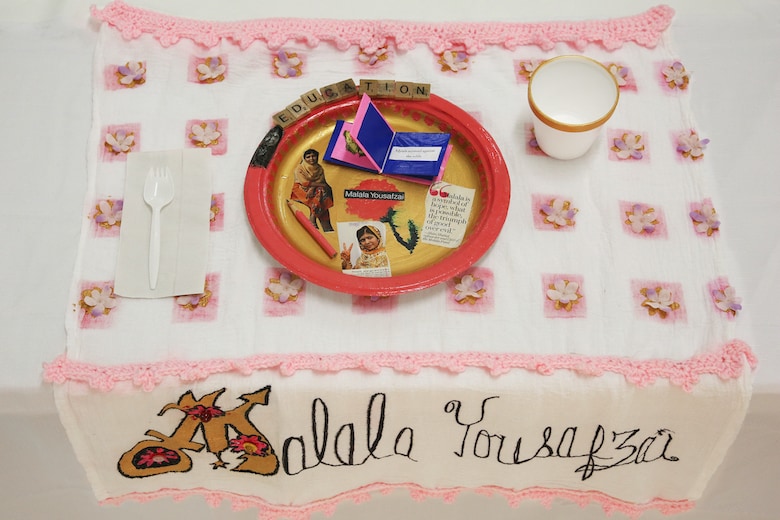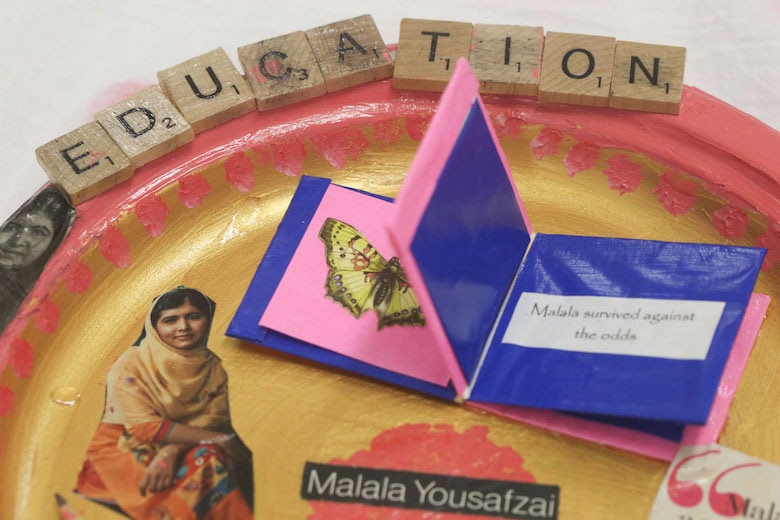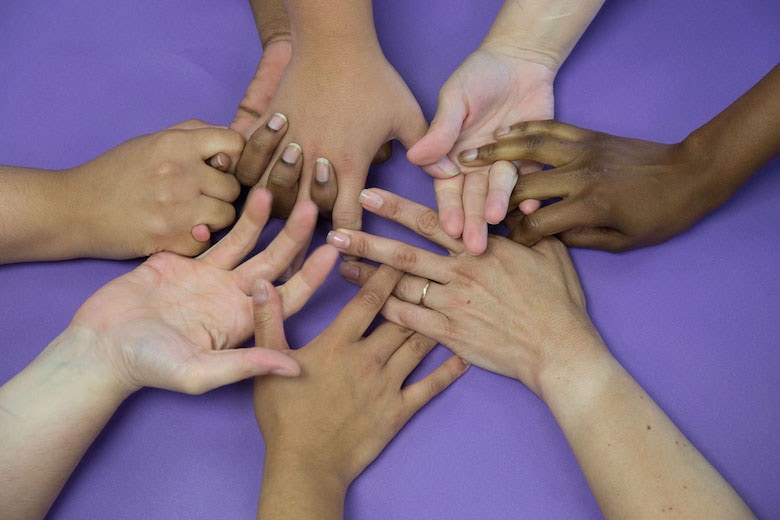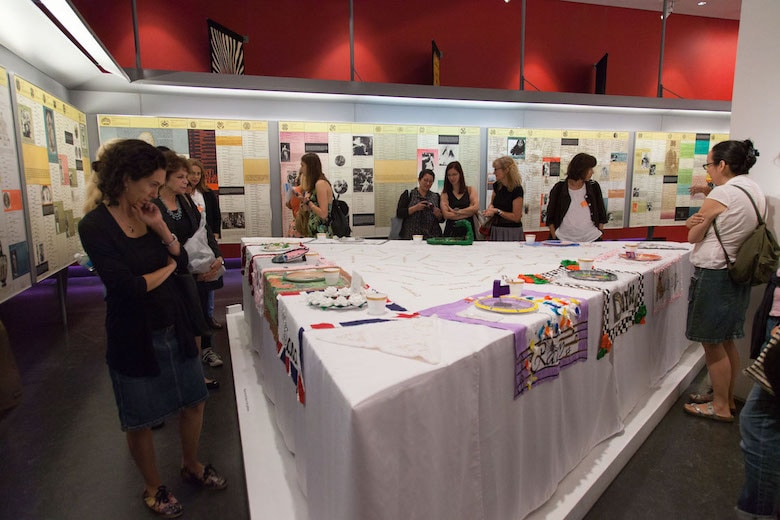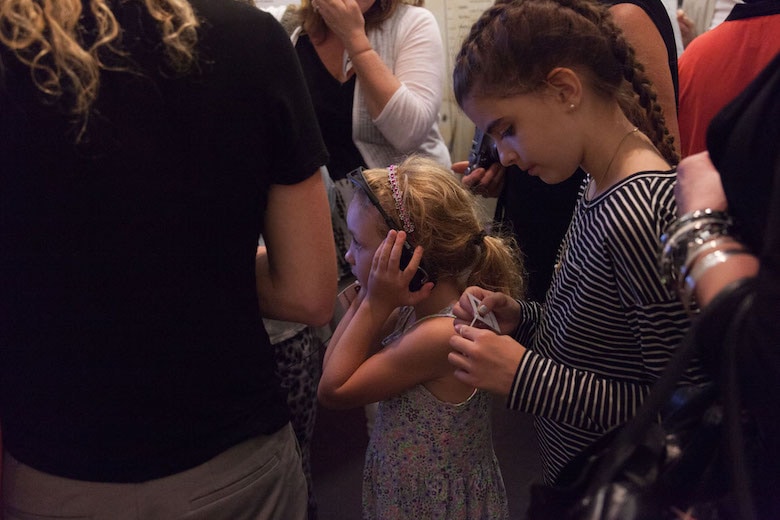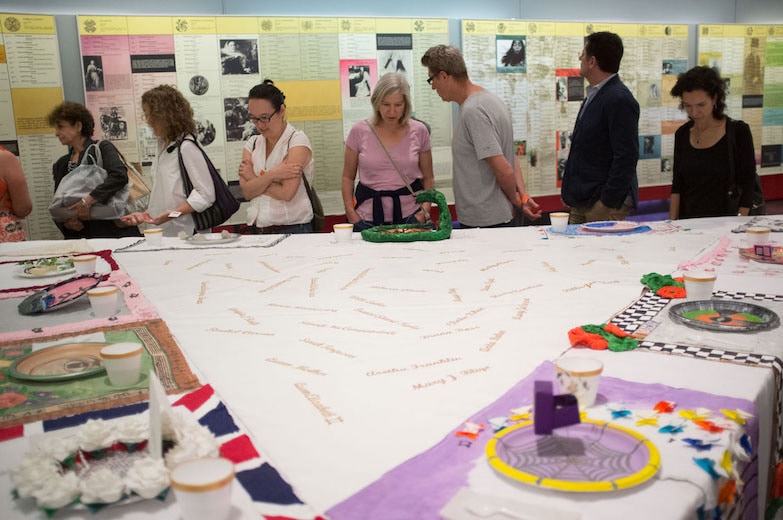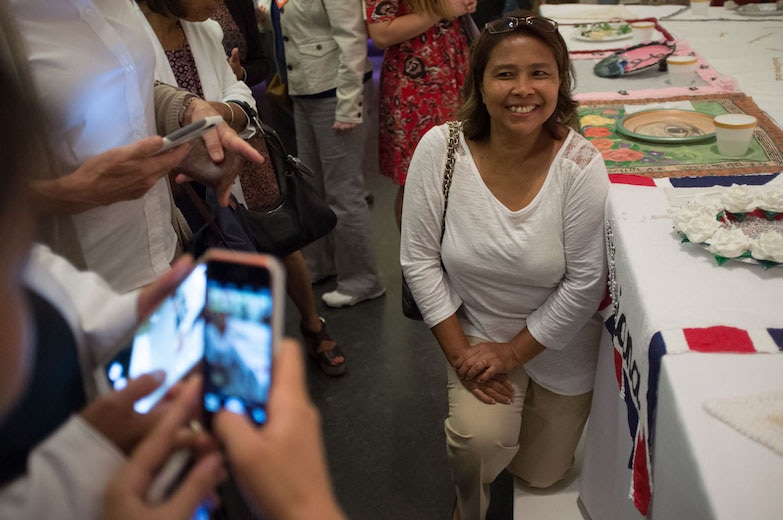Shared Dining
Shared Dining: Women of York, 2015
The Shared Dining Project provided a group of incarcerated women at York Correctional Institution in Connecticut with an opportunity to learn the importance of sharing stories and being part of a larger collective history.
We began by asking the group to think about women who come to mind easily and those that do not, and why. If they could invite one woman, living or dead, famous or unknown, real or fictional to share a meal, “Who would that be?” The group named women they admired and began developing a collective work. They expressed their ideas in decorative plates and runners for a ceremonial table inspired by Judy Chicago’s The Dinner Party.
- Joe Lea from Shared Dining: Women of York, 2015
The women used materials limited to things available in prison, such as paper plates and cloth runners. Scissors and sewing needles are not allowed in prison, so the women improvised with nail clippers, unbent staples, origami and canvas crochet hooks to embellish their pieces.
The Dinner Party was an artistic response to the systemic invisibility of women in recorded history. Incarcerated women are not only left out of recorded history; they are set apart from our collective consciousness by physical removal from society. Each inmate has a number. Women in prison are identified by the acts that led them to prison. Many never shed this shadow identity.
- Joe Lea from Shared Dining: Women of York, 2015
"I listed all the women who have touched my life, inspired my life, helped to transform my life. There’s just a continuation of all the women from my Great Grandmother, to my Mother, and all my sisters, and my mentors. Sometimes I would lie awake, thinking, “Who am I forgetting?”, because there has just been such a powerful presence of women in my life." - Kelly
"I also took it internally and just started thinking about all the Mothers in time that have been shunned or did not have enough importance. That’s when I started thinking about my mother and times where I pushed her out of the spotlight of my life, and the mothers that now take care of my children. I wanted for all the mothers in my life to know that I respect and appreciate everything they do; I wanted to tie all that into the Virgin Mary and my plate." - Yajaira
"I chose to honor Ms. Phyllis Porter because of what she represents to me. To me, Ms. Porter is like my guardian angel, she saved me, and made me a better person overall. It is as my guardian angel that I see her." - Lisette
"I utilized loose letters from a scrabble game, which were ready to be discarded. I recognized how similar it was to the way society all too easily deems inmates unworthy and disposes of us. It inspired me to rescue these wooden tiles. I repurposed them and gave them a new life; in the same way art and education have given me one." - Tracie
Shared Dining integrates a largely voiceless population into a public dialogue about women, history, and incarceration. The women of York drew on their experiences and turned commonplace objects into art. By telling stories of women who inspired them, they were empowered to write their own stories, and share them in places where their voices would be heard. In turn, they learned that without sharing stories, we all risk being left out of recorded history.
- Joe Lea from Shared Dining: Women of York, 2015
We came to the table to listen to the women who created Shared Dining. Each had a story to tell about the woman she chose to honor. Each worked with care and ingenuity to make a place setting worthy of the women honored at the table.
During our visits to York Correctional Institution over several months, we sustained a collaborative process that deepened personal trust and community. The women gathered to make decisions together, resolve differences, edit their transcripts, and to support one another’s choices. In an environment that leaves little discretion for individual choice, the process affirmed their individuality and the shared values of an inclusive community.
- Catherine Muther & Susan Meiselas
In parallel, we met with two women released from York who were part of the original project, Kelly and Lisette. They continued to feel connected to Shared Dining as a collective statement of their capacity for empathy, reflection and creativity. They wanted us to include their stories with the other Women of York.
The audio recordings and transcriptions share the stories of the Women of York, now an integral part of Shared Dining at the Brooklyn Museum. Visitors to the installation can select a photographic image of a plate and runner, and listen to each woman tell her story in her own words.
Their voices lift identity out of anonymity, and bring a powerful presence to their absence.
- Catherine Muther & Susan Meiselas
Many women find healing through prison arts. Through creative mediums we restore our spirits and make sense of our lives. Art is an active and visible way to reflect on our lives and to express those reflections. For us, art is a sanctuary; it is salvation. What we cannot have, we substitute with what we can create. Suddenly our ideas are reality. Art can be a means by which a woman can sculpt her future. She can cut away a past trauma, or paste up a past hurt. She can paint a voice or collage the chaos she chooses to leave behind. All of this is possible with art. Art enables us to transcend these walls with or without anyone’s permission.
This work shows a very different side of us, a very vulnerable side. We are offering this part of ourselves as it is something that people would not otherwise see. To many, we are crimes. We are numbers. We are stigmatized people. Something that took minutes in the course of our lives determines our lives now, and always.- The Women of York, Shared Dining, 2015
People do not acknowledge that we are subject to change, just as all human beings change over time, through learning and experiencing different things in life. We are not that split-second act. Behind these walls we are you, we are human: we feel, we cry, we laugh, we hurt, we enjoy things, we think, we try to become better. When our mothers come to see us in prison, they come to see their daughters. Our sisters come to see their sisters—not criminals. The injuries that we sustain while in prison are often more severe than the hurts that led us to prison in the first place.
We strive to rise above public perception. We aim to prove that we are not what people think we are. We are not our mistakes. Despite our flaws, we aspire to show the beauty that so many people refuse to see.
In this dark place we still find beauty in everything—even ourselves.
- The Women of York, Shared Dining, 2015
